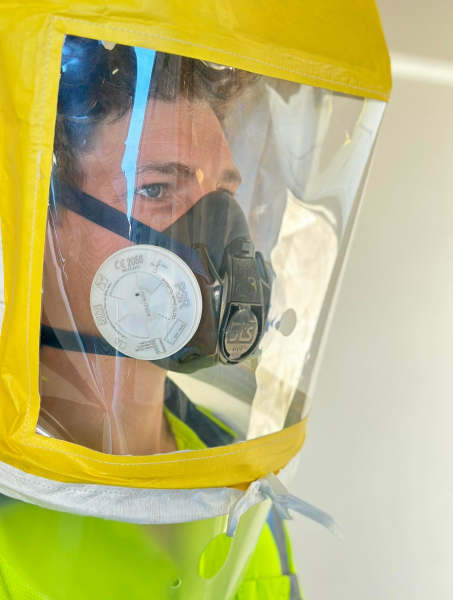Qualitative Half Face Respirator Fit Test (QLFT)
Tight-fitting respirators must seal to the wearer’s face in order to provide expected protection.
This includes disposable respirators (also called “filtering facepieces”). Fit testing is required by Australian New Zealand Standard AS/NZS1715 before a user wears a respirator on the job and should be assessed at least annually.
In addition, fit tests should be performed:
Whenever a different size, style, model or make of respirator is used.
When any facial changes occur that could affect fit, such as significant weight fluctuation or dental work.
The Importance of Fit
Respirator fit is important because it involves several major issues:
Seal.
Compatibility.
Stability.

The Respirator’s Seal
A good fit means the respirator will seal to your skin. A respirator can only work when air passes through the filter. Air will take the path of least resistance, so if the seal isn’t there, the air will go around rather than through the respirator – and therefore lessen the protection.
User Seal Check: An Essential Everyday Test
Employees wearing tight-fitting respiratory protection should perform a seal check each time they put on their respirator. A fit test ensures that the respirator is able to fit and provide a secure seal, but a user seal check ensures that it’s being worn right each time.
Compatibility with other PPE
Safety glasses, hearing protection, face shields, hard hats and coveralls can all vie with a respirator for real estate on a person’s face, head, or body. For instance, if a half face respirator doesn’t fit well (especially if it’s too large), it can overlap with glasses. The more that happens, the more fogging can potentially occur on glasses, and the more likely it is that they’ll interfere with the respirator’s seal.
To catch these problems before they happen on the job any PPE that could interfere with the respirator’s seal is to be worn during the fit test.
Respirator Stability
The better a respirator fits, the more stable it’s likely to be on the wearer’s face. Fit testing determines the respirator’s ability to retain its seal when the worker is in motion. That’s why test subjects are told to go through several exercises as part of testing.
A respirator that shifts during movement may not be able to retain its seal.
As the employer you must provide your employees with the correct respirator, we will fit test these respirators to your employee. If you have not previously had fit testing conducted in the workplace, please allow for different size options as one size does not fit all.
All employees who attend a fit testing appointment must be clean shaven, if they arrive with facial hair, we will not be able to conduct the fit test.
